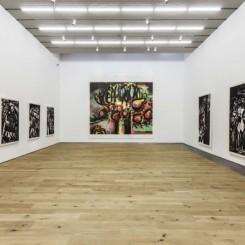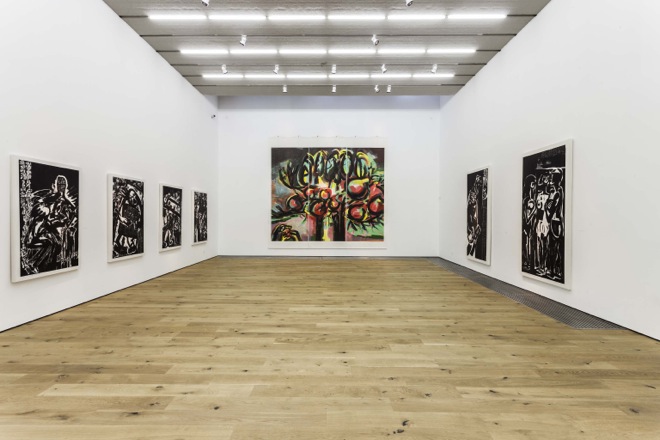Chen Haiyan: Carving the Unconscious
Ink Studio (Red No. 1-B1, Caochangdi, Chaoyang District, Beijing, China) Sep 14–Nov 3, 2013
One sees so much conceptual art that when presented with the narration of dreams – as here – the impulse to interpret is struck by something that seems almost ordinary. Perhaps the aesthetic climate renders such direct work strange – we are more accustomed to installations by young artists of a single fluorescent bulb, a broken stand and a broom. But making “art”, no matter what the conditions and regardless of a leering market, is and ever was a personal activity and form of expression. Despite our will to unravel its meaning, art’s happy mystery is that it can’t be proved, either by the viewer or the artist themselves.
This exhibition by Chen Haiyan gives useful recourse to such thoughts by presenting us with dreams – a subject (outside art) that people have always been inclined to construe. “Carving the Unconscious” is a definitive solo exhibition by a mature artist (refreshing that this new gallery devoted to ink painting is not pursuing only its “emerging” exponents). Chen’s way of giving two fingers to the socialist art she was required to produce in the 1980s was to make, in secret, woodblock prints of images from her dreams. The dream diaries she continues to keep provide the basis for all the works now on show at Ink Studio, which range from small to medium-sized series and some large, colourful works on xuan paper.
The smaller works here, in particular, combine images with text written next to them in little streams or crowded around them, filling the frame. The transcriptions of the texts are both specific in their descriptions and ephemeral in their sense of attendant emotion: “I open the door and see my cat run out…I want to go to the top of the city wall, but that mountain is a dark place. I don’t like it, so I don’t go…” – dreamlike, yes. One wonders, on the side, how much “editing” has been done, consciously or unconsciously, to what is told, and how. There is a consistent cast of cats and a sense of the rural environment in Hangzhou where Chen spent part of her young life – livestock, huts, trees, paths. Van Gogh makes an appearance, as does a golden lion, dragonflies and chickens that turned into cars.

Chen Haiyan, “Chickens Turning into Little Cars”, woodblock print, 19 x 13 cm, 2013
陈海燕,《鸡变小汽车》,木刻版画,19 x 13 cm,2013
This intimate menagerie is depicted playfully and primitively with black outlines on a white ground – naïve and with a great sense of movement; these tumbling, leaping bodies have a spontaneous character that remembers also how they would vanish from the mind’s waking eye. There is something compelling in this crossover of painting and dream state which is not entirely removed from the surrealists’ fetish for “automatic” drawing. Echoes like this, coupled with the steadfastness with which Chen keeps to this thread – there are many works here, and the prints are hand-pressed – maintain an adult air around these simple, bucolic images. Unlike so much of what is exhibited now, they find their validation elsewhere than in acute aesthetic pondering. These are manual, visual, personal products, and innately expressive.
One leaves the show impressed by the impact of Chen’s large-scale paintings, as well as by the robust, episodic quality of the smaller prints. To relate one’s sleeping visions to an unknown audience through in this way seems a timely reminder of the intimacy of artistic expression. Thought-provoking, too, are the different interpretive inclinations that circle round these works as both “art” and personal revelation in the same frame – the dream of art, and art from dreams.


